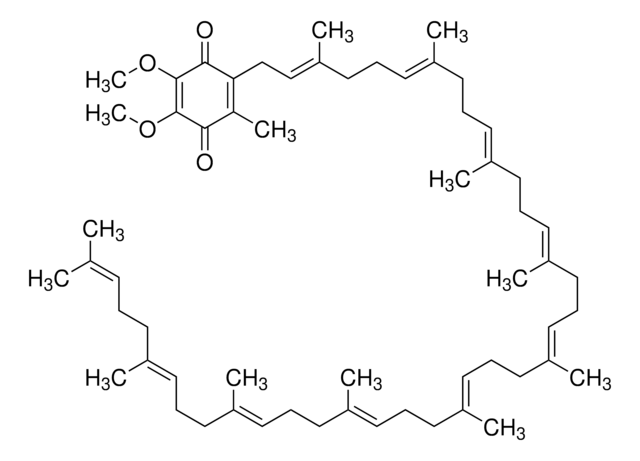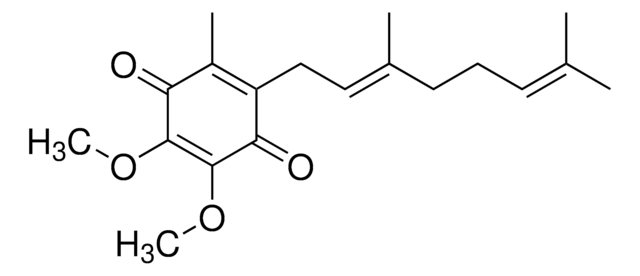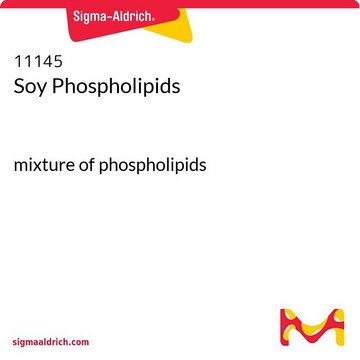D7911
Decylubiquinone
≥97% (HPLC)
Sinónimos:
2,3-Dimethoxy-5-methyl-6-decyl-1,4-benzoquinone
About This Item
Productos recomendados
Nivel de calidad
Análisis
≥97% (HPLC)
formulario
liquid
temp. de almacenamiento
−20°C
cadena SMILES
CCCCCCCCCCC1=C(C)C(=O)C(OC)=C(OC)C1=O
InChI
1S/C19H30O4/c1-5-6-7-8-9-10-11-12-13-15-14(2)16(20)18(22-3)19(23-4)17(15)21/h5-13H2,1-4H3
Clave InChI
VMEGFMNVSYVVOM-UHFFFAOYSA-N
Descripción general
Aplicación
- Lysosomal Ca(2+) as a mediator of palmitate-induced lipotoxicity.: This study explores the role of decylubiquinone in modulating lysosomal Ca(2+) levels, providing insights into mechanisms of lipotoxicity and potential therapeutic applications in metabolic diseases (Oh et al., 2023).
- Quinone binding site in a type VI sulfide:quinone oxidoreductase.: This paper investigates the binding dynamics of decylubiquinone in sulfide:quinone oxidoreductase, shedding light on its role in microbial respiration and potential biotechnological applications (Miklovics et al., 2022).
- Protective role of Decylubiquinone against secondary melanoma at lung in B16F10 induced mice.: The study demonstrates the anti-metastatic properties of decylubiquinone in a melanoma mouse model, highlighting its potential as a therapeutic agent in cancer treatment (Chatterjee et al., 2023).
- Decylubiquinone Inhibits Colorectal Cancer Growth Through Upregulating Sirtuin2.: This research identifies decylubiquinone as an inhibitor of colorectal cancer growth by modulating Sirtuin2 expression, suggesting its application in cancer therapeutics (Li et al., 2021).
Código de clase de almacenamiento
10 - Combustible liquids
Clase de riesgo para el agua (WGK)
WGK 3
Punto de inflamabilidad (°F)
Not applicable
Punto de inflamabilidad (°C)
Not applicable
Equipo de protección personal
Eyeshields, Gloves, type ABEK (EN14387) respirator filter
Certificados de análisis (COA)
Busque Certificados de análisis (COA) introduciendo el número de lote del producto. Los números de lote se encuentran en la etiqueta del producto después de las palabras «Lot» o «Batch»
¿Ya tiene este producto?
Encuentre la documentación para los productos que ha comprado recientemente en la Biblioteca de documentos.
Los clientes también vieron
Nuestro equipo de científicos tiene experiencia en todas las áreas de investigación: Ciencias de la vida, Ciencia de los materiales, Síntesis química, Cromatografía, Analítica y muchas otras.
Póngase en contacto con el Servicio técnico










